Acidic-Sandstone Loving Plants
Chestnut oak, Quercus montana
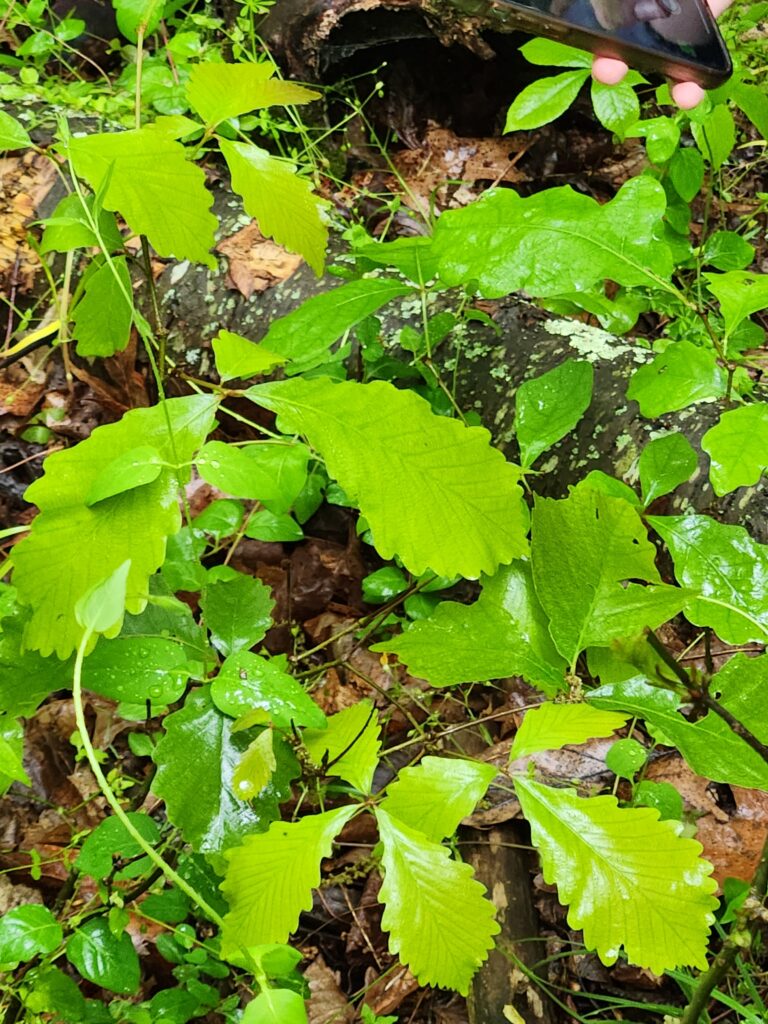
The chestnut oak, commonly found on hilltops and in rocky areas, is a tree native to the greater Appalachian area. Their bark ridges, triangular in cross section, distinct it from other similar oaks. The lumber is also extremely hard.
Chestnut Oak | Ohio Department of Natural Resources (ohiodnr.gov)
Deerberry, Vaccinium stamineum
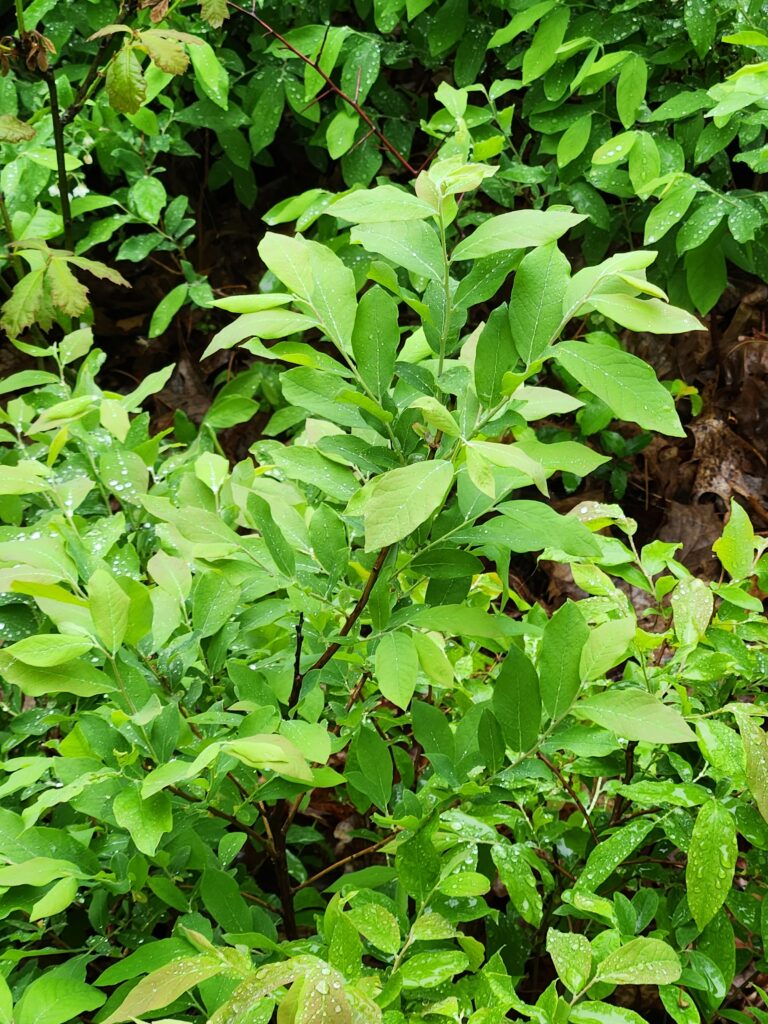
This deciduous shrub occurs across the northeast and south to eastern Texas and prefers rocky and sandy terrain such as ridges and glades. Deerberry’s yellow, blue, or purple berries ripen in late summer. They are an important host plant to the red-spotted purple butterfly.
Know Your Natives – Deerberry | Arkansas Native Plant Society (anps.org)
Hemlock, Tsuga canadensis
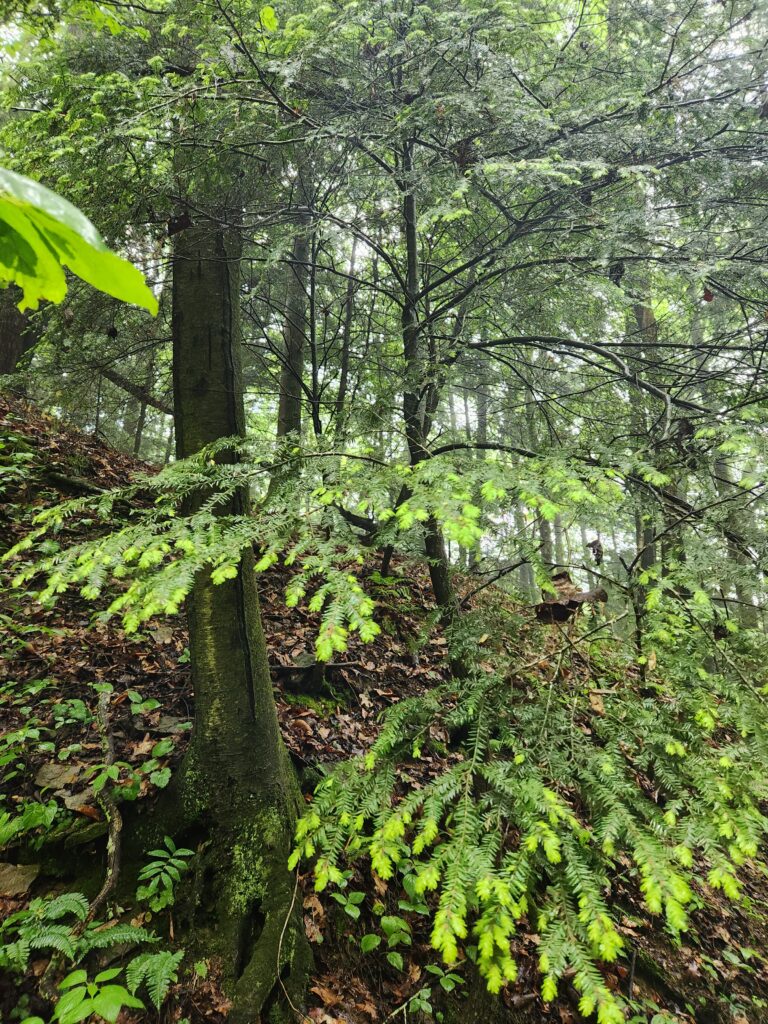
Hemlocks are an evergreen tree whose range extends throughout the eastern US where it has been abundant in cool, rocky, and acidic environments for around 8000 years. Currently, this species is threatened in the US by the invasive hemlock wooly adelgid, a parasite for which the tree has no defense. My sister and I recently took a volunteer opportunity in Crane Hollow, nearby Deep Woods, in which we hiked a difficult route along steep slopes, checking every hemlock for said adelgid. Luckily, we found none that day, likely due to ongoing management efforts!
C:\MYDOCU~2\PROCEE~1\hemlockA.PDF (harvard.edu)
Running pine, Lycopodium clavatum
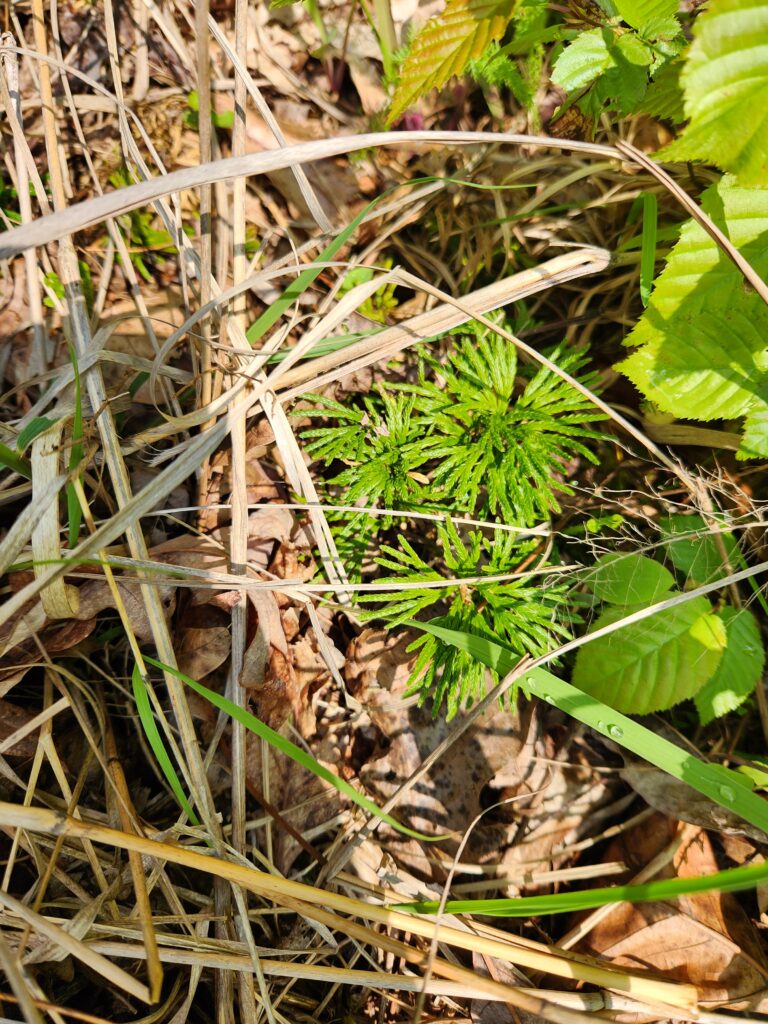
This clubmoss is a rare plant in Ohio, mostly occurring in its southern end. Globally, it is found in the pacific northwest, much of Canada, and around the Great Lakes region. They prefer acidic and dry substrate, and openings such as on ridgetops. Because of such preferences for clearings, maitenance around powerlines has become a threat to their abundance.
Northern Ground Cedar Guide – New York Natural Heritage Program (nynhp.org)
Describing ferns
Frond type: this descriptor refers to the nature of spore production on a fern. Monomorphic ferns produce spores under all leaves (mono=one; same), hemidimorphic ferns have fronds divided into fertile and sterile portions (hemi=half) and holodimorphic ferns have entire fronds that are sterile with others completely dedicated to spore production, leading to very different structures between the fronds (holo=total).
Frond dissection type: similar to leaf complexity for trees, dissection type describes the shape of leaves and nature of leaflets (if present) of a fern. Alongside simple, pinnate, and doubly pinnate is the term pinnatifid, which is similar to pinnate except leaves are divided almost to the rachis instead of entirely.
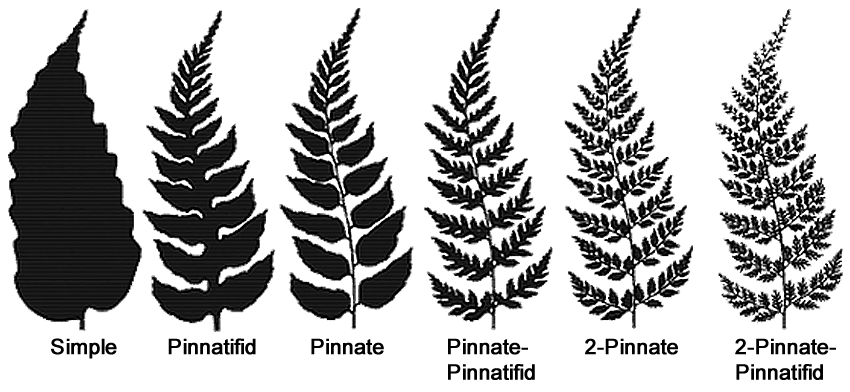
Indusium type: Sori, groups of sporangia containing spores, are covered by a protective flap called the indusia. Reniform indusium are kidney-shaped, peltate ones are circular and attached to the stalk, linear indusium are long/narrow, and indusium are false if consisting of the margins of the leaf(lets). Some ferns may have none.
Christmas fern, Polystichum arostichoides

This fern is hemidimporphic, has pinnate leaves, and peltate indusium.
Broad beech fern, Thelypteris hexagonoptera
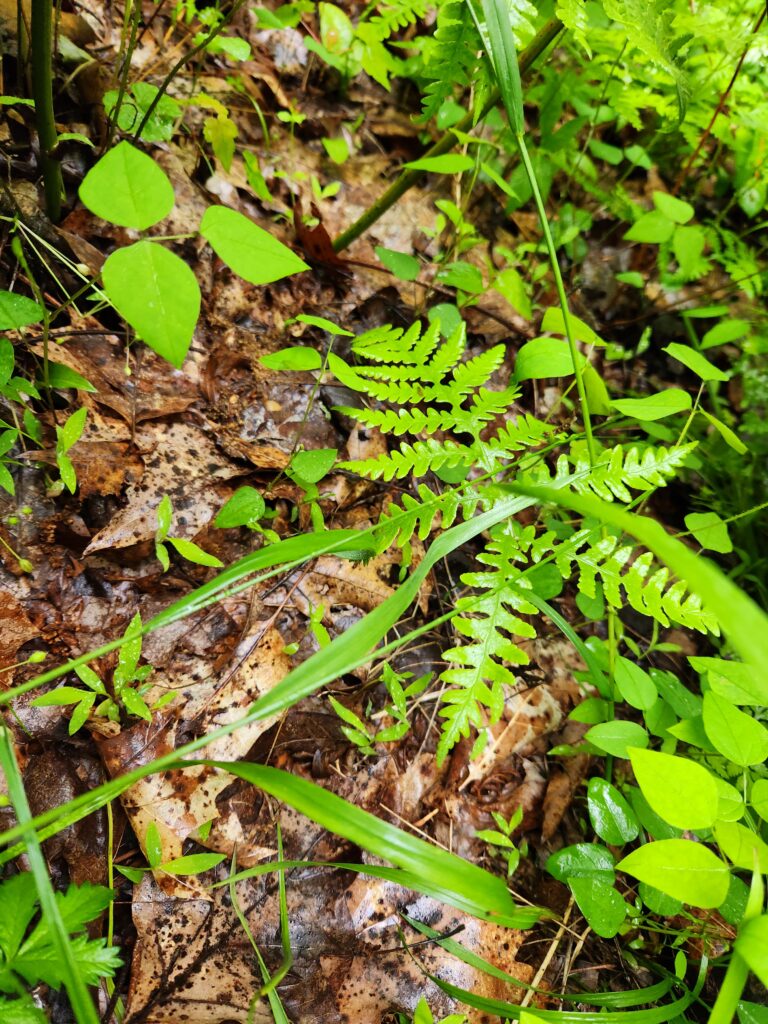
This fern is monodimporphic, pinnatifid, and has no insidium.
Maidenhair fern, Adiantum pedatum
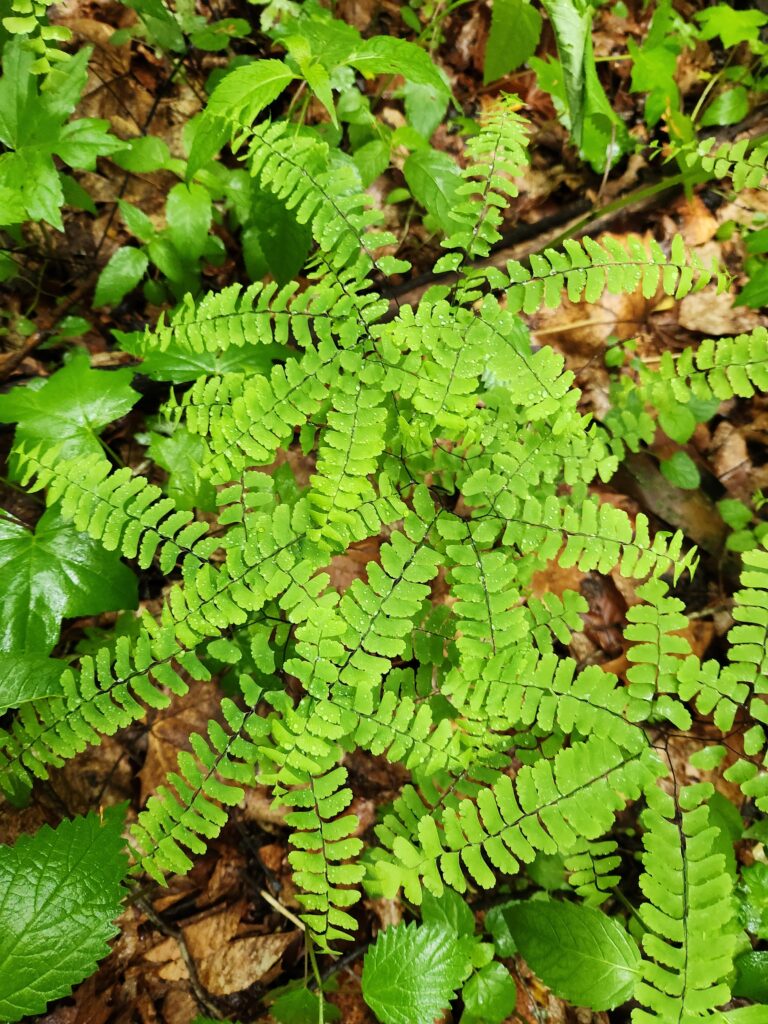
This fern is monodimporphic, pinnate, and has false indusium.
Interrupted fern, Osmunda claytoniana
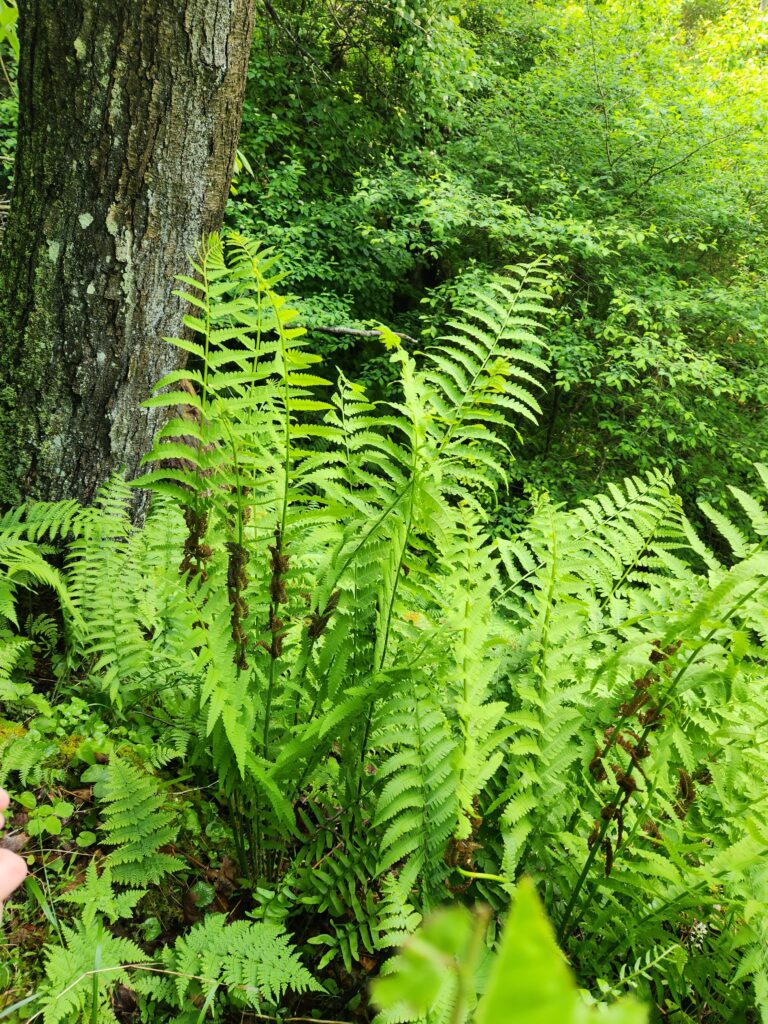
This fern is holodimporphic, has pinnate-pinnatifid leaves, and has no indusium.
Appalachian Gametophyte
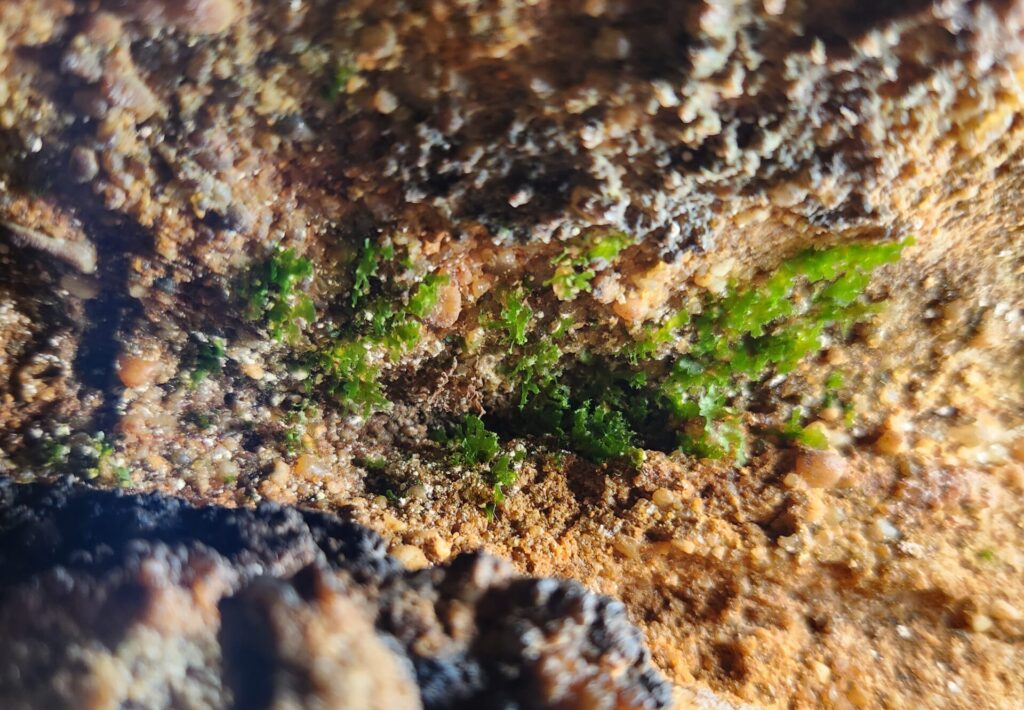
The Appalachian gametophyte (Vittaria appalachiana), found on moist and porous rock outcrops throughout the Appalachian region, is one of three fern species for which the mature sporophyte is unseen and unknown. For the vast majority of ferns, the gametophyte phase is ephemeral, yet Vittaria appalachiana exists as their perennial gametophyte, spreading asexually via gammae.
Gammae, vegatative propagules of a few cells that sprout from the gametophyte margins, release from their parent once mature, becoming separate but genetically identical individuals. Large in comparison to spores, wind, water, or facilitative animals such as slugs carry the new individuals but short distances. Slugs often frequent the moist environments inhabited by mosses and fern gametophytes, and are thus likely agents of dispersal. As evident in a 1995 study, Kimmerer and Young observed moss filaments in slug slime trails.
As the Appalachian gametophyte exists only south of the last glacial maximum, it follows that before the latest glaciation period or before is when the sporophyte was lost. Otherwise, the plant would likely have recolonized further north in suitable habitat via long-distance dispersed spores. As the fern most closely related to V. appalachiana is a species from South America, V. graminifolia, and evidence suggests that the former isn’t a result of hybridization, it is unlikely that the spores of related but significantly different species are supplying the populations of the gametophyte. Instead, their populations are likely result from a time when the climate in North America was more tropical, and the plant still had their sporophyte.
Invasive Plants
Multiflora rose, Rosa multiflora

Multiflora rose, which has colonized much of the Eastern and Midwest US, was introduced from Asia in the 1800s as an ornamental, and later on for erosion control. As is often the case, plants brought over for their attributes of rapid and dense growth end up escaping into natural areas and forming impenetrable thickets, shading out the understory for native plants. A combination of repeated manual removal/destruction with herbicides can kill the plant.
Invasives in Your Woodland: Multiflora Rose | University of Maryland Extension (umd.edu)
Japanese stiltgrass, Microstegium vimineum
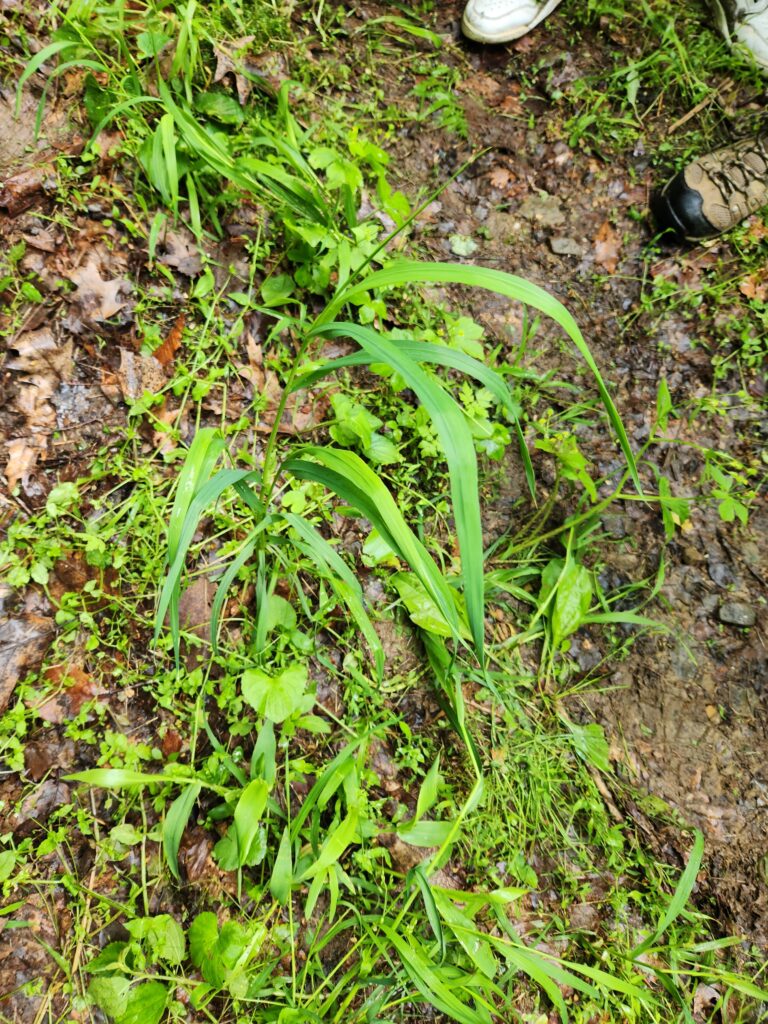
Japanese stiltgrass is an invasive plant in the East and Midwest, having come from China in a more unique way; from being packaging material. Their high adaptability and ability to live in poor-nutrient conditions results in their successful competitiveness against native understory plants. As the weed has shallow roots, it is not difficult to pull the plant out to kill it. Herbicides also work.
Invasives in Your Woodland: Japanese Stiltgrass | University of Maryland Extension (umd.edu)
Flowers with an apocarpous gynoecium
Early buttercup, Ranunculus fascicularius
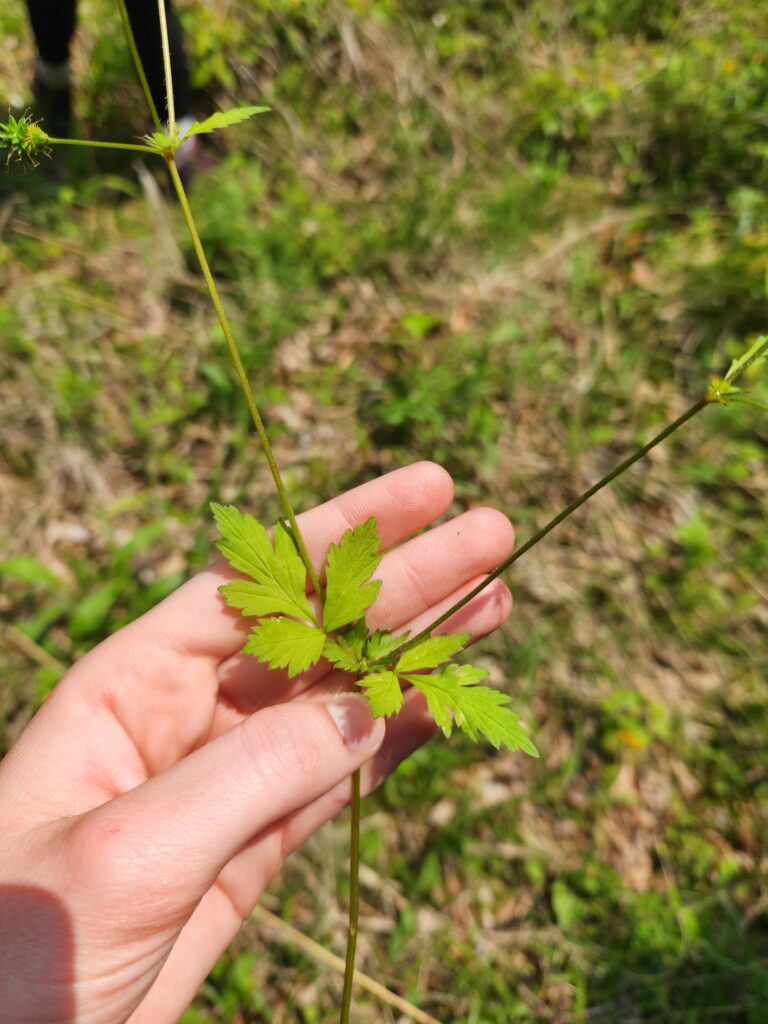
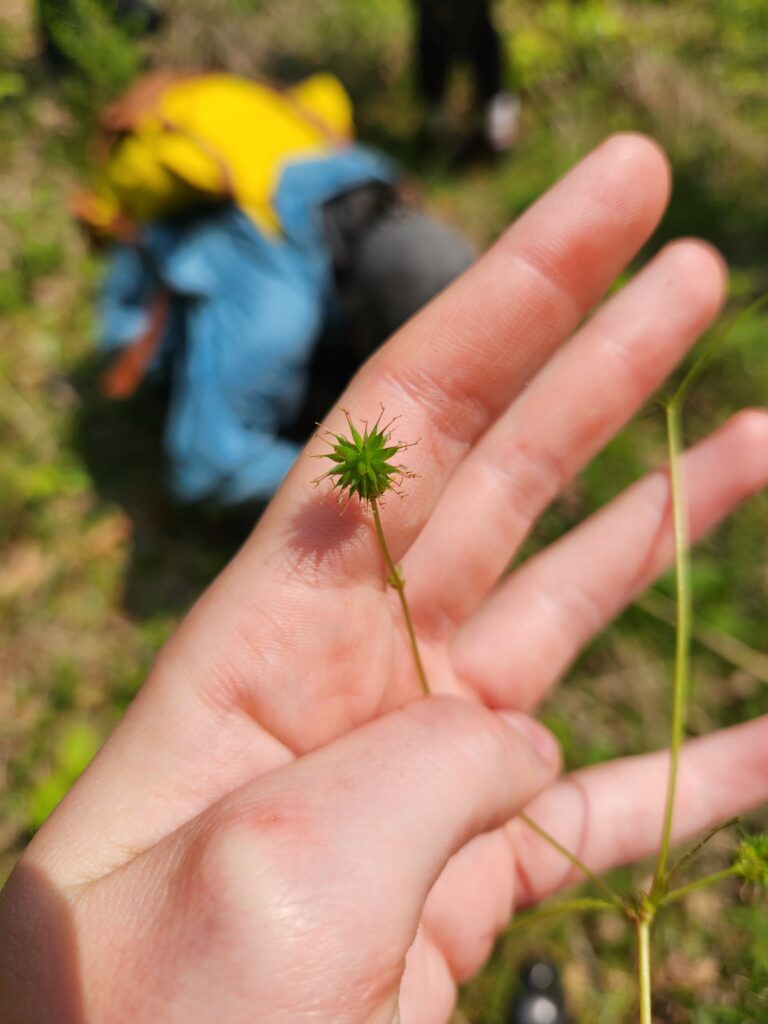
Early buttercup is a species widespread in Eastern North America, common in bluffs and prairies.
Red clover, Trifolium pratense
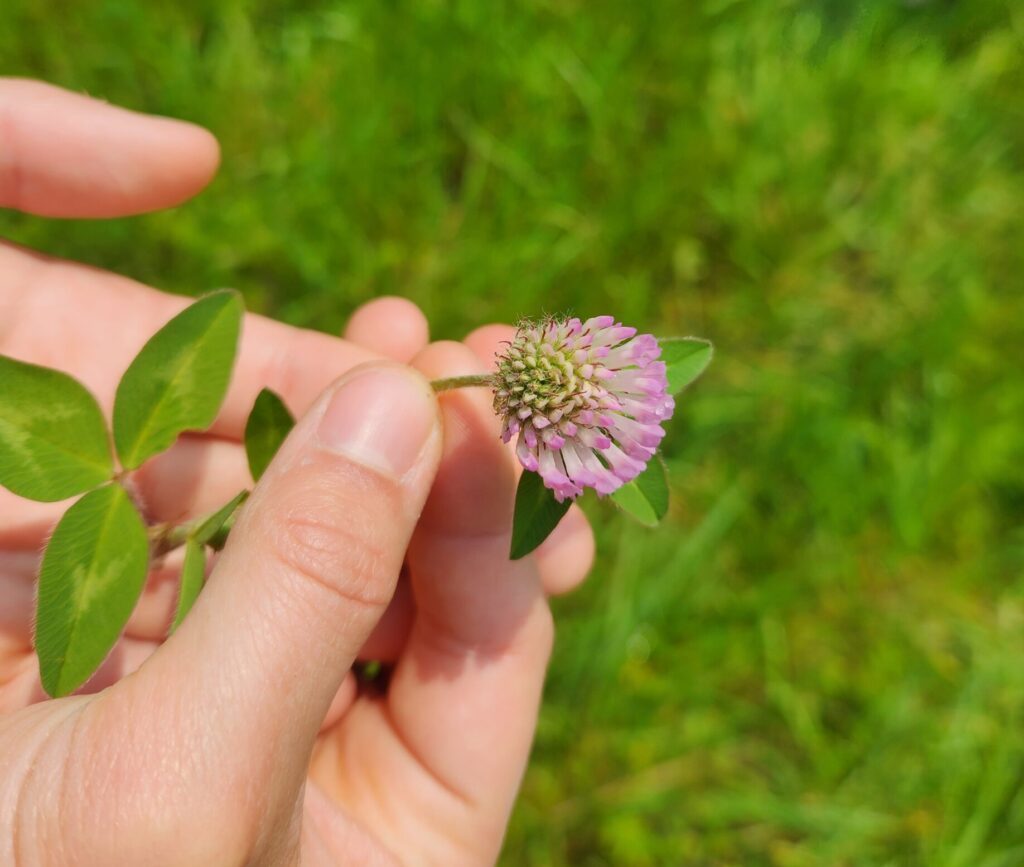
The range of red clover is quite immense, as it is naturalized in Europe, Western Asia, and Northern Africa, and naturalized in even more places such as North and South America.
